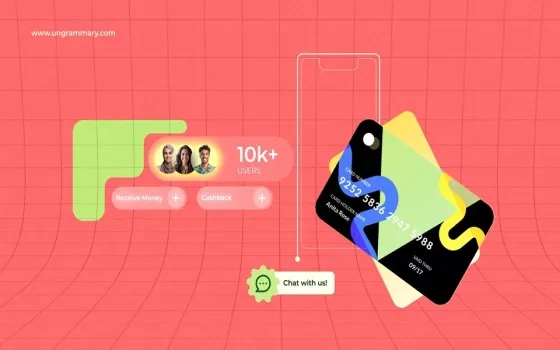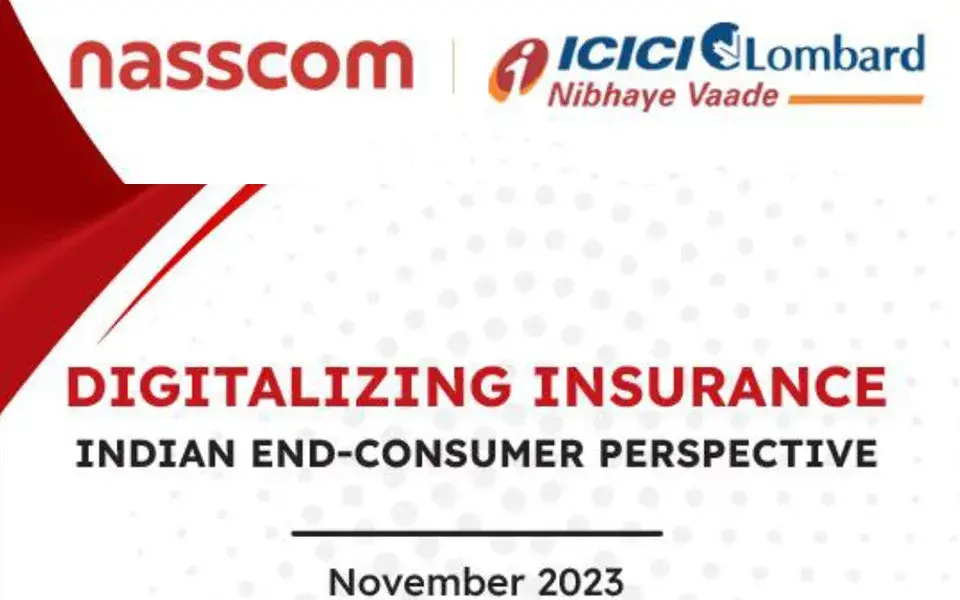With the rise in digital adoption, customers now demand seamless, intuitive, and personalized interactions across all touchpoints. Delivering exceptional user experiences has thus become imperative in the BFSI (Banking, Financial Services, and Insurance) sector.
This necessitates a strategic approach to UX design that not only meets but surpasses user expectations. By leveraging advanced technologies such as AI and automation, optimizing based on user feedback, and ensuring strict regulatory compliance, BFSI organizations can enhance user engagement and satisfaction, thereby driving significant business growth.
Explore our blog to uncover the critical aspects of UX design in BFSI and discover how these innovative strategies are reshaping customer experiences and fostering sustainable business success.
Personalization and Customer Centric UX Design for Banks
In the competitive banking sector, personalized experiences are increasingly important for enhancing customer satisfaction and engagement.
Let us understand how banks use UX design to cater to individual customer needs and preferences:
Leveraging Data Analytics and User Insights
Indian banks leverage data analytics to understand customer behavior and preferences. By analyzing transaction histories, savings patterns, and digital interactions, banks can tailor their services to meet specific customer needs.
HDFC Bank's mobile app offers personalized recommendations based on user transactions and preferences. For instance, it suggests customized financial products such as loans or investment options, aligned with the customer's financial goals. This personalized approach enhances user engagement and satisfaction by providing relevant services directly within the app interface.
Offering Relevant Products and Services
Indian banks use personalized recommendations to offer relevant financial products and services to their customers.
ICICI Bank's "iMobile" app provides personalized offers and alerts based on customer spending patterns and account behavior. For example, customers receive targeted promotions for credit cards or insurance plans that match their financial habits. This personalized approach helps in increasing the adoption of additional services and strengthens customer loyalty.
Fostering Long Term Customer Relationships
By delivering personalized experiences, Indian banks aim to build strong, long term relationships with their customers.
SBI's YONO (You Only Need One) app offers a personalized dashboard where customers can manage all their banking and financial needs in one place.
The app provides personalized financial insights, offers, and reminders tailored to individual customer preferences. This enhances user satisfaction and encourages continued engagement with SBI's digital banking services.
Benefits of Personalization in Indian Banks
-
Enhanced User Engagement: Personalized experiences drive higher engagement rates as customers interact more frequently with relevant content and services.
-
Improved Customer Loyalty: By addressing individual needs and preferences, Indian banks can foster greater customer loyalty and reduce churn rates.
-
Effective Cross-Selling: Personalized recommendations enable banks to cross sell products more effectively, leading to increased revenue per customer.
Seamless Onboarding and User Journey
First impressions are critical in the BFSI (Banking, Financial Services, and Insurance) sector. A seamless onboarding process not only attracts customers but also retains them by providing a positive experience.
UX design plays a pivotal role in simplifying account opening, KYC (Know Your Customer) processes, and product enrollment.
By reducing friction and enhancing user satisfaction through clear navigation, intuitive forms, and contextual guidance, BFSI organizations can ensure a smooth user journey from the first interaction to long term engagement.
Simplified Account Opening:
HDFC Bank's digital banking platform offers an easy and quick account opening process. Users can open a savings account online in just a few minutes by filling out a straightforward form, uploading necessary documents, and completing eKYC. This eliminates the need for visiting a branch, making the process convenient and time efficient.
UX Design Impact: The use of concise, step by step instructions and progress indicators ensures users know where they are in the process, reducing anxiety and making the experience smooth.
Efficient KYC Process:
Paytm Payments Bank has streamlined the KYC process by offering doorstep KYC verification. Customers can schedule a visit from a KYC agent at their convenience, who completes the verification process using a mobile device.
UX Design Impact: By providing clear instructions and real time updates on the agent's arrival, Paytm ensures a hassle free KYC experience. The use of mobile technology for instant document capture and verification further speeds up the process.
Intuitive Product Enrollment:
ICICI Prudential Life Insurance offers a user-friendly app that simplifies the process of purchasing insurance policies. Customers can compare different plans, calculate premiums using interactive tools, and complete the purchase with minimal effort.
UX Design Impact: The app's clean layout, easy to understand language, and interactive calculators guide users through the decision making process, making it easier to choose the right insurance plan.
Clear Navigation and Contextual Guidance:
SBI's YONO app provides a unified platform for banking, investment, and shopping. The app features a clear and intuitive navigation system, allowing users to easily switch between different services. Contextual guidance, such as tooltips and FAQs, help users understand various features and processes.
UX Design Impact: By offering a seamless and integrated experience, YONO reduces the learning curve for users and ensures they can access and use the app's features without frustration.
Real Time Support and Assistance:
Kotak Mahindra Bank's mobile banking app includes a chat feature that provides real time support to customers. Users can get instant answers to their queries, whether they are related to account opening, transactions, or other services.
UX Design Impact: Realtime support reduces friction and enhances the user experience by addressing issues promptly, leading to higher customer satisfaction and retention.
Benefits of Seamless Onboarding and User Journey:
-
Enhanced User Satisfaction: A streamlined onboarding process ensures that customers have a positive first experience with the BFSI service, leading to higher satisfaction levels.
-
Increased Customer Acquisition and Retention: By making it easy to open accounts and enroll in products, BFSI organizations can attract more customers and retain them for the long term.
-
Reduced Drop Off Rates: Clear navigation, intuitive forms, and contextual guidance reduce the likelihood of users abandoning the onboarding process midway.
Omnichannel Experience and Consistency
In the BFSI (Banking, Financial Services, and Insurance) sector, customers interact with services across multiple channels—websites, mobile apps, and physical branches. A consistent and seamless experience across these platforms is crucial for customer satisfaction and loyalty.
UX design plays a pivotal role in creating an omnichannel approach by ensuring visual consistency, feature parity, and smooth transitions between platforms.
This approach reinforces brand trust and user loyalty through cohesive branding, responsive design principles, and synchronized user experiences.
Visual Consistency Across Platforms:
HDFC Bank maintains a consistent visual identity across its website, mobile app, and physical branches. The use of the same color schemes, typography, and iconography ensures that customers recognize and trust the brand regardless of the channel they use.
UX Design Impact: Visual consistency helps build brand recognition and trust. When customers see familiar design elements, they feel more confident and comfortable using the services.
Feature Parity and Seamless Transitions:
ICICI Bank's digital banking services provide feature parity across their website and mobile app. Whether users are transferring money, paying bills, or checking account balances, they can access the same features with similar workflows on both platforms.
UX Design Impact: Feature parity ensures that customers have access to the same functionalities regardless of the device they use. This reduces the learning curve and enhances user convenience, as they do not need to relearn how to use different platforms.
Responsive Design Principles:
The SBI YONO app and website use responsive design to adapt to various screen sizes and devices. Whether accessed on a desktop, tablet, or smartphone, the interface remains user friendly and functional.
UX Design Impact: Responsive design ensures that users have a seamless experience regardless of the device they use. It provides flexibility and accessibility, allowing customers to switch between devices without compromising usability.
Cohesive Branding:
Axis Bank's branding strategy is consistently reflected across all its touchpoints, including its website, mobile app, social media channels, and physical branches. The use of consistent messaging, logos, and visual elements creates a unified brand image.
UX Design Impact: Cohesive branding across channels builds a strong brand identity and reinforces trust. Customers feel reassured knowing they are interacting with the same brand, whether online or offline.
Synchronized User Experiences:
Kotak Mahindra Bank's omnichannel strategy ensures that customer interactions are synchronized across platforms. For instance, a customer can start a loan application on the website, continue it on the mobile app, and complete it in a physical branch without any disruption.
UX Design Impact: Synchronized experiences across channels provide convenience and continuity. Customers appreciate the ability to pick up where they left off, enhancing their overall satisfaction and loyalty.
Benefits of Omnichannel Experience and Consistency:
-
Improved Customer Satisfaction: Consistent and seamless experiences across channels lead to higher customer satisfaction. Customers feel valued and understood when their interactions with the brand are smooth and coherent.
-
Increased Brand Trust and Loyalty: Cohesive branding and synchronized experiences reinforce brand trust. Customers are more likely to remain loyal to a brand that provides reliable and consistent service.
-
Better User Engagement: Feature parity and responsive design principles ensure that users remain engaged with the brand across various platforms. This increases the likelihood of repeat usage and long term engagement.
Feedback Mechanisms and Continuous Improvement in UX Design
In the BFSI sector, user feedback is crucial for refining UX design. Employing robust feedback mechanisms ensures continuous improvement. These tools help UX designers gather valuable insights, identify pain points, and understand user behavior. Iterating on designs based on this feedback allows for optimized features, enhanced usability, and increased user satisfaction and engagement.
Key Feedback Mechanisms in UX Design:
Surveys and Usability Testing:
-
Customer Surveys: Conduct surveys to gather direct feedback on digital platforms. For instance, HDFC Bank frequently uses surveys to identify areas needing improvement and features that users find valuable or problematic.
-
Usability Testing: Perform usability testing sessions to observe real users interacting with digital products. This helps UX designers pinpoint usability issues and refine the design for better user experiences.
Customer Journey Analytics:
-
Journey Mapping: Use customer journey analytics to map user interactions across various touchpoints. ICICI Bank employs this method to gain a holistic view of the user journey, identifying friction points and optimizing the overall experience.
-
Behavioral Analysis: Analyze user behavior to understand how customers navigate through digital platforms, helping to enhance navigation and streamline processes.
Focus Groups:
-
Qualitative Feedback: Host focus groups to discuss new features and gather in-depth qualitative feedback. Axis Bank uses focus groups to understand user perspectives and tailor digital experiences to specific needs.
-
User Personas: Develop detailed user personas based on focus group insights to inform design decisions and ensure the product meets diverse user requirements.
A/B Testing:
-
Design Variations: Implement A/B testing to compare different design variations and determine which performs better in terms of user engagement and satisfaction. SBI (State Bank of India) uses A/B testing to make data-driven design decisions.
-
Performance Metrics: Measure key performance metrics such as click-through rates, conversion rates, and task completion times to evaluate the effectiveness of design changes.
AI and Automation for Enhanced Experiences
AI-driven technologies are revolutionizing BFSI UX design by automating routine tasks, predicting user behavior, and personalizing interactions. Machine learning algorithms analyze vast amounts of customer data to offer tailored recommendations, detect fraudulent activities, and streamline operations. Integrating AI into UX design enhances efficiency, responsiveness, and proactive service delivery, significantly enriching the overall customer experience.
Key Aspects of AI and Automation in UX Design:
Automation of Routine Tasks:
-
Chatbots and Virtual Assistants: AI-powered chatbots, like those used by HDFC Bank and ICICI Bank, handle routine customer inquiries, freeing up human agents for more complex tasks. This automation ensures customers receive quick and accurate responses, improving overall service efficiency.
-
Automated KYC Processes: AI streamlines the KYC (Know Your Customer) process by automatically verifying documents and customer information. This reduces the time required for account opening and enhances the onboarding experience.
Predictive Analytics and User Behavior Prediction:
-
Personalized Recommendations: AI algorithms analyze user data to predict future behavior and offer personalized financial advice. SBI's YONO app uses these insights to provide tailored investment recommendations and product suggestions based on individual user profiles.
-
Proactive Service Delivery: By predicting user needs, AI can trigger proactive notifications and alerts. For example, Axis Bank sends reminders for bill payments and low balance alerts based on user behavior, ensuring timely actions and improved customer satisfaction.
Fraud Detection and Security:
-
Real-Time Monitoring: AI systems continuously monitor transactions to detect and flag suspicious activities in real-time. HDFC Bank uses AI-driven fraud detection to safeguard customer accounts and prevent unauthorized transactions, enhancing security and trust.
-
Anomaly Detection: Machine learning models identify unusual patterns in user behavior, alerting the bank to potential security threats. This proactive approach ensures that fraudulent activities are detected early and addressed promptly.
Personalized User Interactions:
-
Dynamic User Interfaces: AI personalizes the user interface based on individual preferences and behaviors. Paytm Payments Bank dynamically adjusts its app layout and features to cater to different user segments, creating a more intuitive and engaging experience.
-
Tailored Communication: AI enables personalized communication by analyzing customer data to understand preferences. ICICI Bank uses AI to send customized offers and messages that resonate with users, increasing engagement and conversion rates.
Operational Efficiency:
-
Process Optimization: AI optimizes back-end processes by automating routine administrative tasks. HDFC Bank leverages AI to streamline loan processing and approval workflows, reducing turnaround times and improving operational efficiency.
-
Resource Management: AI helps manage resources effectively by predicting customer demand and optimizing staff allocation. For example, AI-driven analytics can forecast peak hours in branches, enabling better resource planning and customer service.
Conclusion
The BFSI sector is undergoing a pivotal transformation driven by the demand for exceptional digital experiences. By embracing advanced UX design principles, BFSI organizations can create interactions that are seamless, personalized, and secure, meeting the high expectations of today's tech-savvy customers.
These strategic UX initiatives not only enhance customer satisfaction but also position BFSI firms for sustained growth and ensuring competitive advantage in an evolving digital economy.
Ungrammary excels in crafting digital experiences with a blend of creativity and precision, guided by its expertise in UX/UI. Stay tuned for fresh ideas and valuable insights that will elevate your digital journey.
















